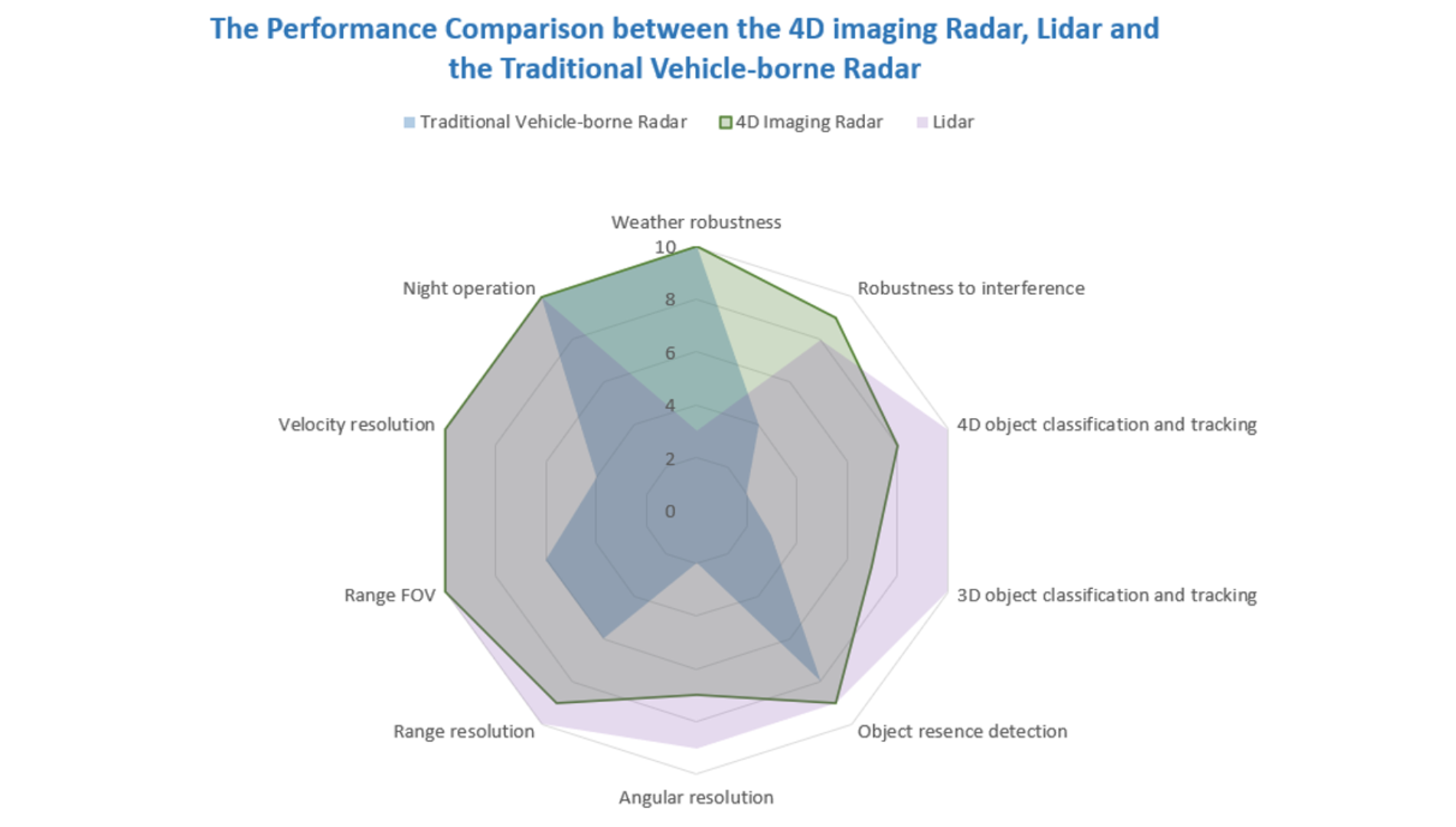公司名称:新拓尼克(北京)科技研发中心有限公司
项目名称:4D成像毫米波雷达解决方案
奖项类别:创新可持续产品
产品/服务介绍
新拓尼克4D成像毫米波雷达解决方案提供宽视场下高分辨率的距离、速度、方位角、高度信息,具备穿透雾霾、雾气、烟雾、雨雪的能力,且具有抗噪声干扰能力和多径效应,可以充分利用其实现精密检测和精密跟踪。该方案可用于数百个静止和移动目标的实时、低延迟目标检测、分类和跟踪,主要应用于气象探测、环境监测、智慧安防、无人机、自动驾驶、工业自动化、医疗等领域。


循环经济实践阐述
传统雷达主要分为激光雷达和3D毫米波雷达。激光雷达精度高但易受天气影响,而且价格高昂。3D毫米波雷达可全天候工作,价格便宜但分辨率低。新拓尼克4D毫米波雷达方案具备卓越的全天候工作性能和超高的精准度,可实现更好的图像检测效果,且符合ETSI和FCC标准。除环境感知优势外,4D毫米波雷达的生产成本仅为激光雷达的10-20%,便于量产与应用。
该方案应用领域十分广泛。在环境领域,4D毫米波雷达可用于土壤湿度检测、作物生长监测和病虫害预警,提供关于土壤和植被状态的信息。同时可以监测动物情况。在安防领域,4D毫米波雷达可以检测和跟踪潜在的入侵者,保护人员财产安全。在智慧交通领域,4D毫米波雷达可以提供实时车辆监测和跟踪,便于交通信号控制、拥堵监测和智能交通管理决策。
生命周期阶段概述
设计阶段:
利用毫米波放大器阻抗匹配、输出功率提升、相控阵等技术解决4D成像雷达研发难点
采用低损耗高增益的缝隙波导天线,解决产品体积、功耗和天线间的相互干扰问题,在减小体积的情况下保证高分辨率和最优性能,并减少损耗
对于像易受伤害的道路使用者这样的低RCS目标,接近零的虚警率和漏报率
内置硬件安全模块,支持对称和非对称的硬件加密和解密,保证网络安全
生产阶段:
生产计划人员在生产初期按流程控制物料的可用性,并保证交货时间,最大程度节省资源
产品在生产阶段严格遵循质量管理流程,满足 ISO 26262 和 IEC 61508 等功能安全标准的要求。
使用阶段:
配置云端管理系统,轻松实现不同设备间的数据共享,无需建立专用服务器存储数据
可定制解决方案,适用于不同应用场景
产品符合ETSI和FCC标准,并符合各个国家的具体要求,保证产品使用安全
回收与再生阶段:
回收产品制造全阶段产生的电子垃圾并存放在指定位置,例如报废电路板、报废电缆、废金属、铝废料等。为保证环境与人员健康,废料将标注名称后交由回收公司处理。
新拓尼克提供专业的维护及维修服务。产品在使用过程中损坏、故障,新拓尼克可派遣专家进行维修,减少换新次数。
更多产品/服务亮点
The specification of 4D Imaging Radar
The 4D imaging radar uses 77-81GHz millimeter wave and can output target range, target speed, target horizontal angle and target height information. Compared with the current mass-produced traditional vehicle mounted mmWave radar, the most important feature of 4D imaging radar is that it has higher resolution and can output the height information of the target. The height information can help the vehicle distinguish targets such as overpasses and manhole covers. In addition to altitude information, the 4D imaging radar has also expanded the maximum detection range to 300 meters, and the angular resolution has also been greatly improved.
The following figure shows the comparison of detection range and resolution between 4D imaging radar, lidar and traditional vehicle borne radar. It is obvious that 4D imaging radar not only maintains the robustness of traditional vehicle borne mmWave radar under different working conditions, but also improves the detection range and resolution. Based on the better resolution, the resolution and tracking ability of 4D imaging radar for targets have also been significantly improved, and its performance is closer to that of lidar. The most important thing is that it is not as susceptible to snow and fog and other bad weather as the traditional visual radar / lidar.



